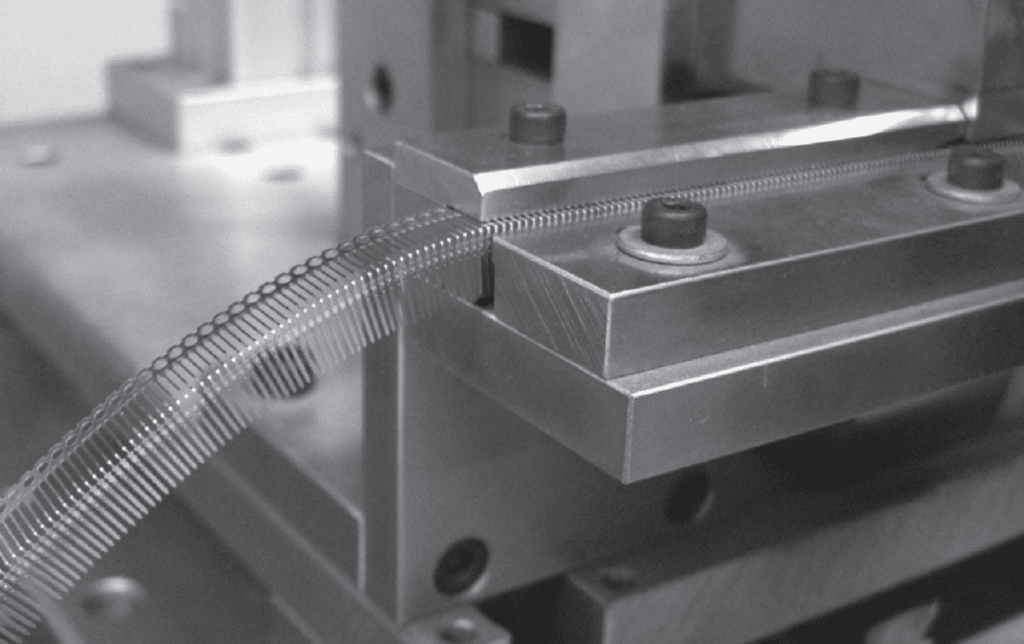The classic noble metal contact finish system is gold over nickel as discussed in Chapter II/2.1.2 Contact Finish Degradation Mechanisms. The following discussion will focus on this system. Comments on gold flashed palladium alloy systems will follow after the main discussion.
Gold over nickel contact finishes can be used in virtually any connector application. Their major limitation is cost. The gold is generally applied selectively to the contact area to minimize material cost but with added complexity in the electroplating process as discussed in Chapter I/Basic Principles.
Gold contact finishes can provide durability ratings from tens to thousands of mating cycles. This range is possible because gold contact finishes require normal forces in the range of 50 to 100 grams and hard alloy golds in the thickness range of 0.2 to 2.5 µm (15 to 100 microinches) are options. The combination of low contact force and a low coefficient of friction results in low mating forces and allows for high pin count capability. Gold contact finishes are suitable for currents ranging from milliamps to tens of amperes. Experience has shown those gold finished connectors are capable of maintaining acceptable resistance stability for both signal (milliamps) and power (tens of amperes) applications.
Hard gold contact finishes are suitable for application temperatures up to 125 degrees Celsius, beyond this temperature self diffusion of the hardening agents to the contact surface my compromise the nobility of the gold. Soft gold and thicker nickel underplates should be considered for higher temperature applications. As noted, exposed copper alloy base metal, through porosity, wear or plating practice can lead to copper corrosion in environments containing sulfur and chlorine. Contact lubricants can be effective in enhancing performance in such environments.
Gold flashed palladium alloy contact finishes were developed as an alternative to gold finishes in the 80’s when gold prices rose dramatically. Since that time the price of palladium has escalated to the point where it is now more expensive than gold. Experience with gold flashed palladium alloy finishes has shown its performance is comparable to gold in most respects and the durability life is somewhat better due to the higher hardness of palladium compared to gold.
